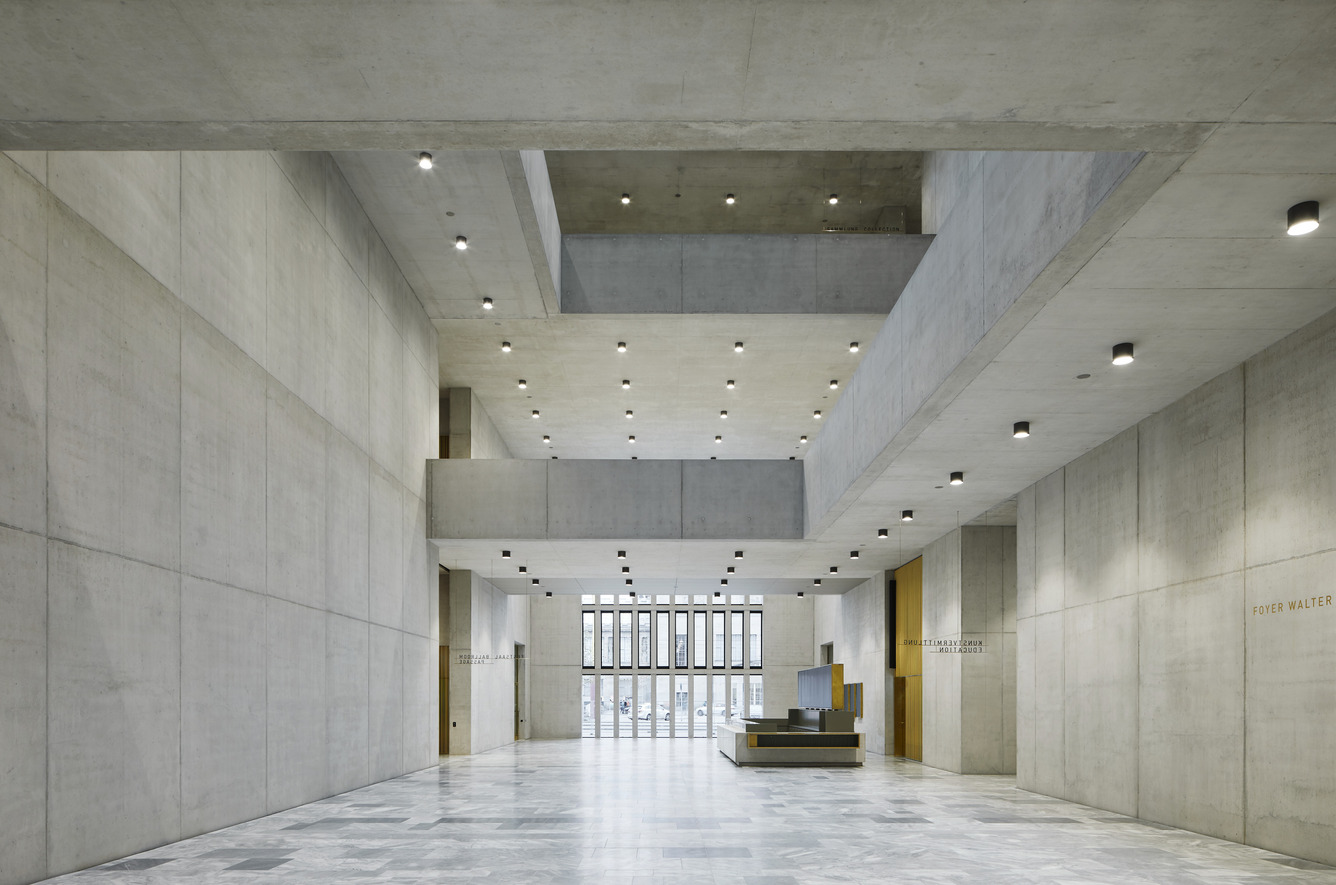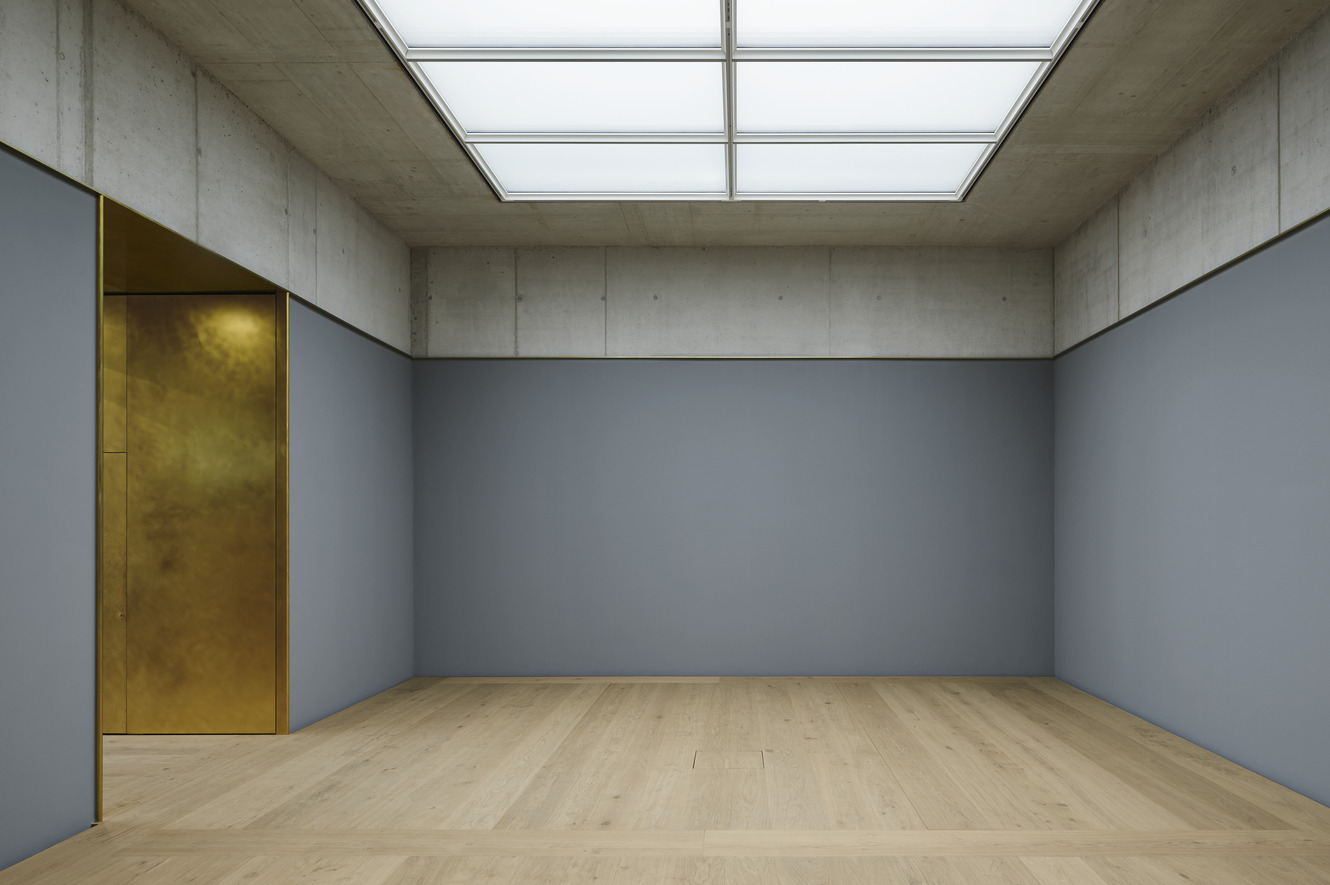The new Kunsthaus Zürich extension, designed by David Chipperfield Architects Berlin, expands the existing Kunsthaus museum, situated between the Grossmünster church and the university. The Kunsthaus Zürich now represents the largest art museum in Switzerland, comprising four buildings from different eras – the Moser building (1910), the Pfister building (1958), the Müller building (1976) and now the Chipperfield extension (2020). The new freestanding building houses the collection of classic modernism, the Bührle collection, temporary exhibitions and art from 1960 onwards.

View from the south-east. Photo: ©Noshe. (click on the image to view the photo gallery)

Based on the Central Campus masterplan published in 2007, the museum buildings and the Schauspielhaus theatre located on the east side of the urban square Heimplatz, form a gateway of the arts as an urban entry to the education mile. Here, the large freestanding buildings of Zurich’s universities are lined up like a string of pearls leading northwards.

Site plan ©David Chipperfield Architects. (click on the image to view the photo gallery)
The urban concept for the extension envisaged the placement of a clear geometric volume on the northern edge of the square. The building form takes inspiration from the old cantonal school, built in 1842 to the north of the site, which defines the urban frame with its architectural clarity. The urban plan defines two new external spaces: the urban square to the south, framed on all four sides by buildings and the new Garden of Art to the north as an open and permeable natural environment.

Heimplatz façade (South elevation). Photo: ©Noshe. (click on the image to view the photo gallery)

An expansive entrance hall, spanning the full length of the building, creates a link between these two new urban spaces. Due to its low-threshold accessibility it likewise acts as a public link between the institution and the city. A visitor passageway running underneath the square connects the new building with the existing Kunsthaus, creating one institutional entity.

Façade towards Garden of Art (North elevation). Photo: ©Noshe. (click on the image to view the photo gallery)


The architectural identity is modelled on traditional stone façades, as found in the existing Kunsthaus and many other significant public buildings in Zurich. The extension is therefore embedded in a building culture that is an expression of an enlightened civil society. The new building combines tradition and innovation through slender vertical fins crafted from local Jurassic limestone with sawn surfaces and placed at regular intervals in the façade, embedding the building it its urban and cultural context in a contemporary manner.

Ground floor plan with section lines ©David Chipperfield Architects. (click on the image to view the photo gallery)


The internal organisation is based on the concept of a ‘house of rooms’. This idea finds its expression in the different design of the rooms in terms of size, orientation, materiality and lighting, giving each its own character and creating a diverse sequence of spaces. All public functions such as the café/bar, events hall, museum shop and museum education services are arranged around the central entrance hall at ground floor level, while the two upper floors are reserved exclusively for the display of art.

Central Hall, view to the north. Photo: ©Noshe. (click on the image to view the photo gallery)

The varyingly dimensioned exhibition spaces are characterised by a calm materiality and an abundance of daylight – side light on the first floor and skylight openings on the second floor – placing the immediate experience of art at the centre of the visitor experience.

Staircase hall. Photo: ©Noshe. (click on the image to view the photo gallery)


David Chipperfield: “The project for the extension of Kunsthaus Zürich brings together the fundamental concerns of museum design with the responsibilities created by both the urban context and the relationship with the existing museum. From the outset, we have sought to invest the museum with the physical qualities that enhance the experience of the museum visitor while considering the civic nature of the building and the institution. We hope that the quality of the architecture, its spatial, formal and material resolution will guarantee that the extension, like Karl Moser’s original building, becomes an integral part of the physical, social and cultural infrastructure of the city of Zurich”.

Events hall. Photo: ©Noshe. (click on the image to view the photo gallery)










